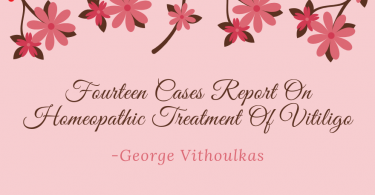Efficacy Of Homoeopathic Drug Against Cotton Mealy Bug An Evidence-Based Study.
ABSTRACT: The main aim of this article is to know the effectiveness of Homoeopathic medicines to battle against the greatest threat for farmers that is the effect of mealybug on the plants. This article shows how effectively Homoeopathy can be utilized to stop the invasion of mealybug with the dynamic medicines more effectively with less price as well as with no chemicals being sprayed on the plants.
As we all know the efficacy of Homoeopathic medicines on human being now, we also need to know that how effective it is on plants also. The mode of action as well as the law of similars can also be applied for use even in agriculture as well. The basic principles and mode of administration of drugs holds good even in agriculture. Homoeopathic medicines such as Silicea & arnica has a tremendous role in controlling the mealybugs as well as give protection to the plants as well. It helps in improving the growth of plant as well as helps to recover faster from the bad effects of mealybugs.
In Homoeopathy, we give importance to Individuality and there is unique way of prescribing the similimum based on several observations, I would also like to say that Plants are unique when we compare them to humans and animals and need different approach. The law of similimum has immense potential and could give a new direction that requires attention of the researchers in alternative agriculture.1
Proving on plants then finding the suitable drugs is impossible task as we all know that we give importance to subjective symptom’s, and it’s impossible to extract these subjective symptoms from plants which is one of the greatest limitations in Homoeopathy & Constructing a Material Medica for Plants is inevitable.2
BRIEF INTRODUCTION ON MEALYBUGS:
Mealybugs are much less mobile on the plant than other groups of vectors such as aphids and leafhoppers, a feature that makes them relatively inefficient as virus vectors.3
Mealybugs are among the most serious pests of greenhouse plants. Infested plants look unsightly because of the whitish cottony mass of insects and the black sooty mold fungus that develops on honeydew excretions. The presence of ants should alert the grower to check ant trails to determine if ants are carrying mealybugs into the greenhouse.4
They usually spread from one plant to another in contact with it, and the crawling nymphs move more readily than adults. Ants that tend the mealybugs may move them from one plant to another and occasional long-distance dispersal by wind may occur. Mealybugs feed on the phloem.5
REPRODUCTION & PLANT TO PLANT TRANSMISSION:
The maximum incubation period of eggs was 120 min. The duration of reproduction was as short as 10 days to a maximum of 47 days. Offspring production by adult females was disjunctive with one to seven non-reproductive periods interspersed between the reproductive phase of the life cycle. More than 10 crawlers per day were produced by females for a minimum and maximum period of 6 and 30 days 6
its rapid spread across widely differing agro climatic zones of the Indian continent. Lower numbers and shorter life span of males suggested that they have a minor role in reproduction, although under field conditions7
HOMOEOPATHY IN AGRICULTURE:
As we all know that when it comes for one of the best treatments for the human beings Homoeopathy comes in our mind but when it comes for plants, we are only concerned about the yield we get from it & the best way to get the better yield is by using harsh chemicals on them not bothering that they are also living beings, they too have life.
In this article I shall share with you one of the best and cost affective way of treating the plants with zero chemicals as well as less cost & less maintainace. This shall be a precursor for the large-scale study in order to know the true effectiveness of Homeopathic medicines on the plants which are affected by mealybugs.
I shall here discuss the effectiveness of Homoeopathy on plants. The plant which was affected here is Hibiscus. Hibiscus is a genus of flowering plants in the mallow family, Malvaceae. The genus is quite large, comprising several hundred species that are native to warm temperate, subtropical and tropical regions throughout the world. Member species are renowned for their large, showy flowers and those species are commonly known simply as “hibiscus”.8
The plant was completely affected by mealybug, the leaves started becoming yellow, the stem was filled with these bugs and flowers had a stunted growth as well as the leaves stated falling. There was unhealthy appearance, the plant was very fragile and light touch the leaves were falling.
As we all know that Without the presence of chemical silica within their cells, plants basically would not be able to stand upright or even grow. It regulates all cellular processes, including reproduction, brings a healthy resilience to brittle growth, and adds strength and ‘grit’. When silica is missing from the soil, or when plants have trouble in getting it, homoeopathic silica makes a world of difference – puny plants with weak and straggly growth, or those prone to fungal attacks, frequently grow strong and vigorous within days of being sprayed.9
When it comes to our Materia medica. Each remedy has its own description of its various characteristics. A list and categorization of most likely remedies is called Materia Medica. A Materia Medica is to include all substances which have been proved and which have been used with apparent efficacy.10
Based on the above feature, Silicea 30 was prescribed and the plant started improving, the easiest way may be to add 6-8 globules of the desired remedy into a 150 ml bottle of water, and shake once the globules have dissolved. This mixture can be used to add to small or larger amounts of water, depending on the plant. The spray was sprayed every morning for 2 months. Within few weeks the plant recovered and was free from mealybugs and started flowering again. The duration my be a bit more to get recovered when compared to harsh chemicals but we also need to know that with zero chemicals and very less harm to the effected plant its health was restored back to it.
Since this branch of Homeopathy for treating plants is so new, the information on how to use it is still growing. Because homeopathy is inexpensive and safe, it has attracted many people who are fascinated with the idea that working with Nature presents incredible potential.11
1st week

3rd week

5th week

8th week

Conclusion:
As we all know that Homeopathy works for humans, animals and plants and it also supports the self-healing inner forces our medicines are residue free, safe and work very harmless it has no side effects when it comes for large scale of plants suffering from similar symptoms Homeopathy is very economical and can be game changer in the field of farming.
REFFERENCE:
- Betti, M. Brizzi, D. Nani, M.Peruzzi (1997): Effect of high dilutions of Arsenicum Album on wheat seedlings from seed poisoned with the same substance; British Homoeopathy Journal, April, Vol. 86, pp 86-89.
- https://orgprints.org/23727/1/23727_MM.pdf assesd on 02-03-2021
- https://www.sciencedirect.com/topics/agricultural-and-biological-sciences/mealybug
- David E. Hartley, in Introduction to Floriculture (Second Edition), 1992
- Roger Hull, in Matthews’ Plant Virology (Fourth Edition), 2002
- Ben-Dov Y. 1994 A systematic catalogue of the mealybugs of the world, p.686. Intercept Limited, Andover, UK.
- https://watermark.silverchair.com/jis10 assesd on 4-03-21
- “Genus: Hibiscus L”. Germplasm Resources Information Network. United States Department of Agriculture. 2007-10-05. Archived from the original on 2010-05-28. Retrieved 2010-02-16
- https://homeopathyplus.com/homeopathic-silica-the-gardeners-friend
- Homeopathic Materia Medica, Oscar E. Boericke, Narayana Publishers, page ix, Kandern, Germany
- https://www.michmontreal.com/grow-your-green-thumb/assesd
About Author:
Dr Skandhan. S. Kumar, BHMS MD Organon of Medicine, Assistant professor department of organon of medicine and philosophy, Father Muller Homoeopathic Medical College.
Dr Shreya N Padiyar, BHMS MD Organon of Medicine, Assistant professor department of Surgery, Yenepoya Homoeopathic Medical College.




